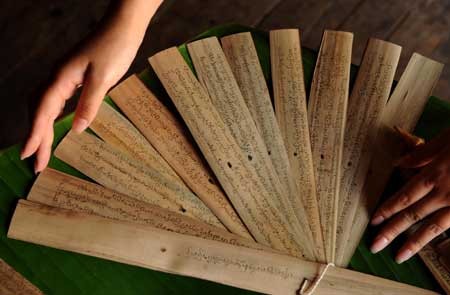Tibetan craftsmen specializing in woodblock-print sutras are struggling to keep up production, despite government support via training and building additional workshops, with customers having to wait for years, according to the Shanghai Daily newspaper.
Sutras are texts used in Buddhist ceremonies, with traditional varieties, which are hand-printed on paper with carved wooden blocks, particularly prized for their resistance to fading.
Formerly reserved for nobility and the rich, sutras have received a surge in demand after ordinary citizens were given access following the founding of the Tibet Autonomous Region in 1965.
"People's preference for woodblock prints partly lies in the fact that they can last over 500 years, while offset prints fade after 100 to 200 years," said Nyima, deputy director of the Buddhist Association of China's Tibet branch.
Tibet currently has around 60 traditional sutra printing houses, which are supplying more than 46,000 monks and nuns in over 1,700 temples and countless Buddhists in the region.
The 400-year-old Meru monastery printing house, the largest producer of woodblock sutras in Tibet, can only turn out approximately 700 sutras each year, including 600 "Satasahasrika Prajnaparamitas," a particularly demanding work of around 100,000 lines, the Shanghai Daily said in its report.
The monastery also caters to foreign nationals, with customers from the United States and France purchasing several scriptures for libraries.
To help meet demand, Tibet's government has set aside 1.3 hectares of land for a new branch of the Meru monastery's printing house and plans to train additional printers to shorten waiting times.
The Buddhist Association of Tibet has also pledged to provide funding for the said construction, which is slated for completion in 2020.




























